Wheelchair Accessible Madrid: The Ultimate Guide
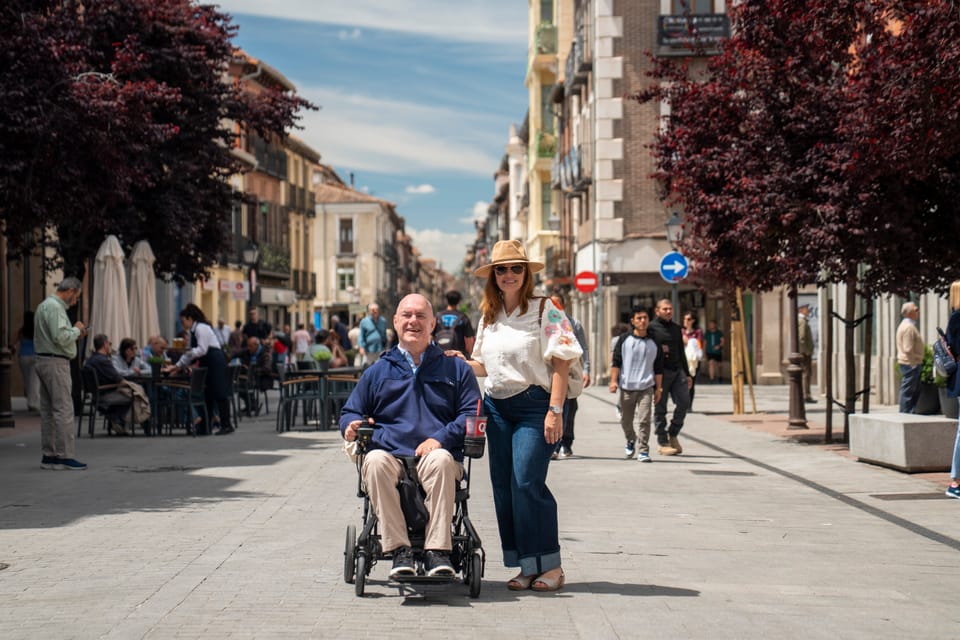
What's Ahead?
- About Accessible Madrid and Why to Travel There
- When Should You Travel to Madrid?
- Season Recommendations
- Where to Stay in Madrid
- Accessible Transportation in Madrid
- Top 10 Things to Do and Their Accessibility
- More to Explore Outside Madrid
- Want to Experience These With a Group?
- Accessible Restaurants Recommended by Our Community
- Accessible Madrid Tips from Our Community
- Wheelchair Repair Shops
- Safety
Finding information about accessibility in different cities can be difficult. This is true even with the increased awareness about accessibility needs. Just because someone has limited mobility, doesn't mean they don't travel, but apparently, many travel sites neglect to acknowledge this important fact. But, we're here to rectify this once and for all.
Here at Wheel the World, we've gathered all the necessary information to make your trip to Madrid as smooth as possible. Not only do we cover accessible attractions, but everything else in between from hotels to transport. Plan your trip with ease when you read our complete guide to accessible travel within Madrid.

About Accessible Madrid and Why to Travel There
If you have limited mobility, you'll be happy to know Madrid has really upped its game in terms of accessibility in recent years. While it's not yet up there with the likes of New York, there are still many accessibility options in place, particularly when it comes to the attractions. Many of the streets in Madrid are accessible. Most of them are wide and have nicely maintained sidewalks that are smooth and even. However, some older areas of the city can't be changed. These older areas still have narrow, cobbled streets which can be challenging, particularly when it comes to flitting down them in a motorized scooter. Efforts have been made to be ADA-compliant, though. You will find ramps available in many places around Madrid and this includes both smaller and larger streets.
In terms of terrain, Madrid is considered one of the most walkable cities in the world. While it is very elevated — the city lies 700m above sea level — some areas are nice and flat. That being said, you should be aware that there are hilly areas. Some parts of the city have more gradual hills, while others are really quite steep. Getting a map out and planning your route is essential if you don't want to get caught in an unmanageable situation.
So why visit? Well, Madrid is home to impressive architecture. It’s like walking through an outdoor museum - think of the Royal Palace and Plaza Mayor. Alongside the history, there is a lot of art and culture. You'll find some of the most popular museums here featuring the work of Goya and El Greco. Madrid is also a gastronomist's delight, a festival-goer's dream, and a clubber's paradise.
Want to experience the best of Madrid with accessibility at the center?
Our 6-day group trip makes it easy—and a lot of fun. You’ll visit iconic spots like the Royal Palace and Puerta del Sol, roll through the streets of La Latina at sunset, sip wine and eat tapas, and take a day trip to the stunning El Escorial. It’s all designed with accessibility at the core, so you can focus on enjoying the adventure, not the logistics.
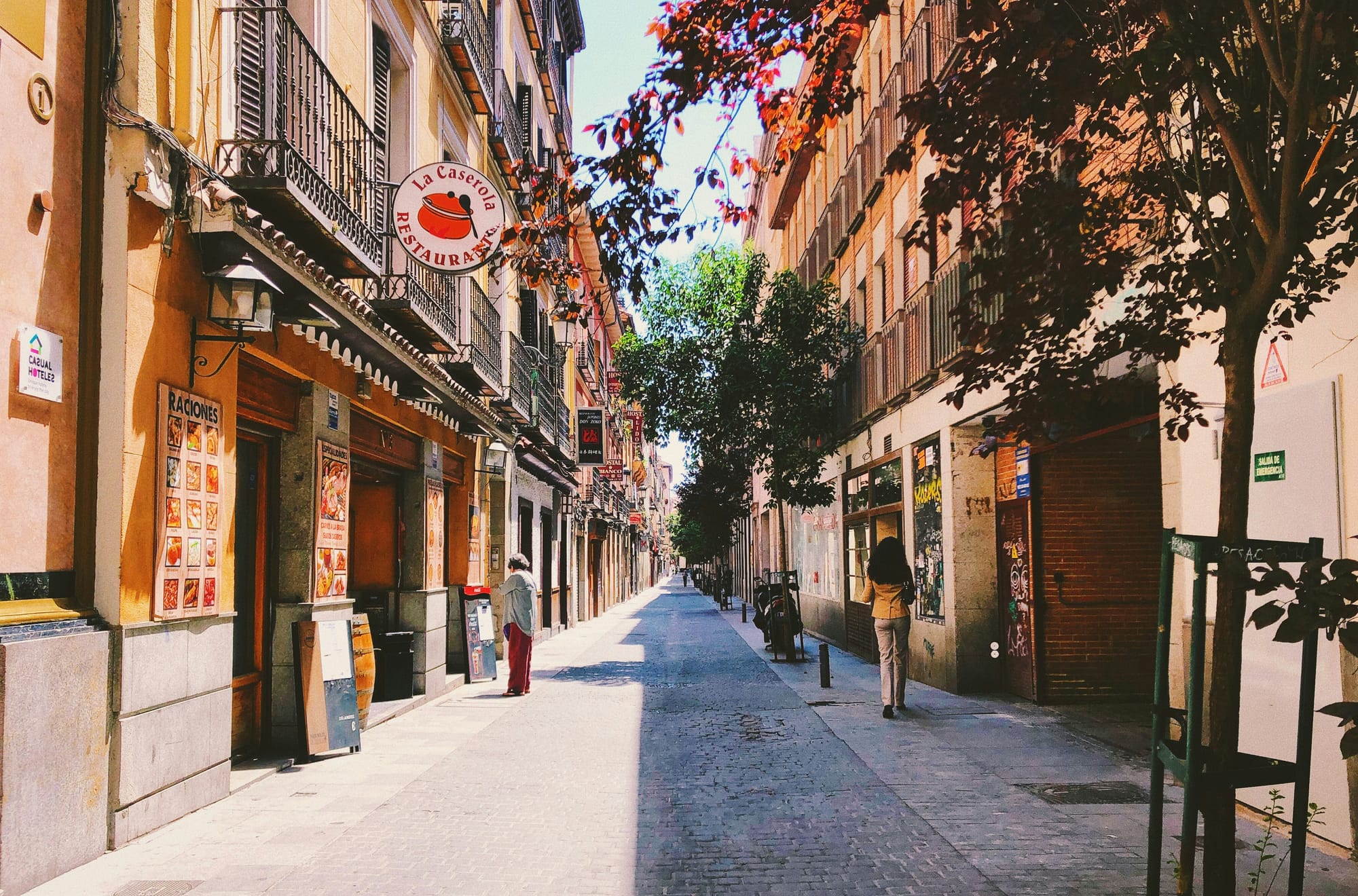
When Should You Travel to Madrid?
Madrid's climate lends itself to all-year-round travel. But there are some times of the year that are better than others. Looking at all four seasons, we can help you choose when is the best time for you to visit.
Fall
Generally considered one of the best times to visit Madrid, the September to November period offers mild temperatures that reach the mid-70s Fahrenheit. Not only that, but rainfall is pretty moderate during this time unless you come in November. This is when the city records its highest rainfall in the year. It can make surfaces slippery, so it's worth considering coming earlier in the Fall if mobility is an issue.
Spring
With varying levels of rainfall and decent temperatures, Spring is a very popular time to visit. Temperatures range from 45°F to 70°F and come with some rather beautiful weather. That being said, it's always smart to bring a range of clothing and some wet weather gear as there can be unexpected showers.

Summer
This is the hottest time of the year for Madrid. And when we say hot, we mean hot. Temperatures average between 60°F to 90°F but can reach above 100°F. There is little to no rain in the summer, which you may think is a good thing until you're out and about. Many people take to having siestas in the afternoon due to the extreme heat, which can also put a dampener on any tour plans. It's especially the case in August when many businesses may even shut up shop for the month. Often, it's so hot that walking or taking the metro is a pretty unpleasant experience.
Winter
With average temperatures ranging from 35°F to 55°F, Winter is a great time to travel. However, January can get very cold, with temperatures dropping to 20°F. Snow is not typically an issue though, but you may have to contend with cold hands and some icy patches when you're out exploring.
Season Recommendations
Still can't decide when to visit? Well, we've got some other considerations relating to specific events and interests that might make your decision easier.
- December to February is cold, though still considered mild relative to other European cities. One of the great reasons to come here during this time is the emptiness. Generally, it is far less crowded at this time, which means accommodation and flights are a lot cheaper. For art and architecture enthusiasts, this is the perfect time to explore the museums and art galleries that fill the city.
- March to May is a popular option if you're a nature lover. The parks and gardens throughout Madrid begin to bloom offering the chance for some stunning photos while outdoor sightseeing. It's also a shoulder season meaning there are fewer visitors than other times of the year.
- June to August is hot and dry but, nevertheless, very popular. If you can handle the heat, then this is the best time to come if you're interested in different festivals, outdoor music, and cultural events. The long days and lively atmosphere can make this a delight when exploring the city. Prices are higher though, and booking in advance is a necessity.
- September to November is the best time if you want to enjoy some of the outdoor sites Madrid has to offer. Heading to the Casa de Campor or El Rastro market is a lot more fun in cooler temperatures, as are walking tours and outdoor cafés. This is especially so because there are generally fewer tourists at this time with the city gently slowing down.
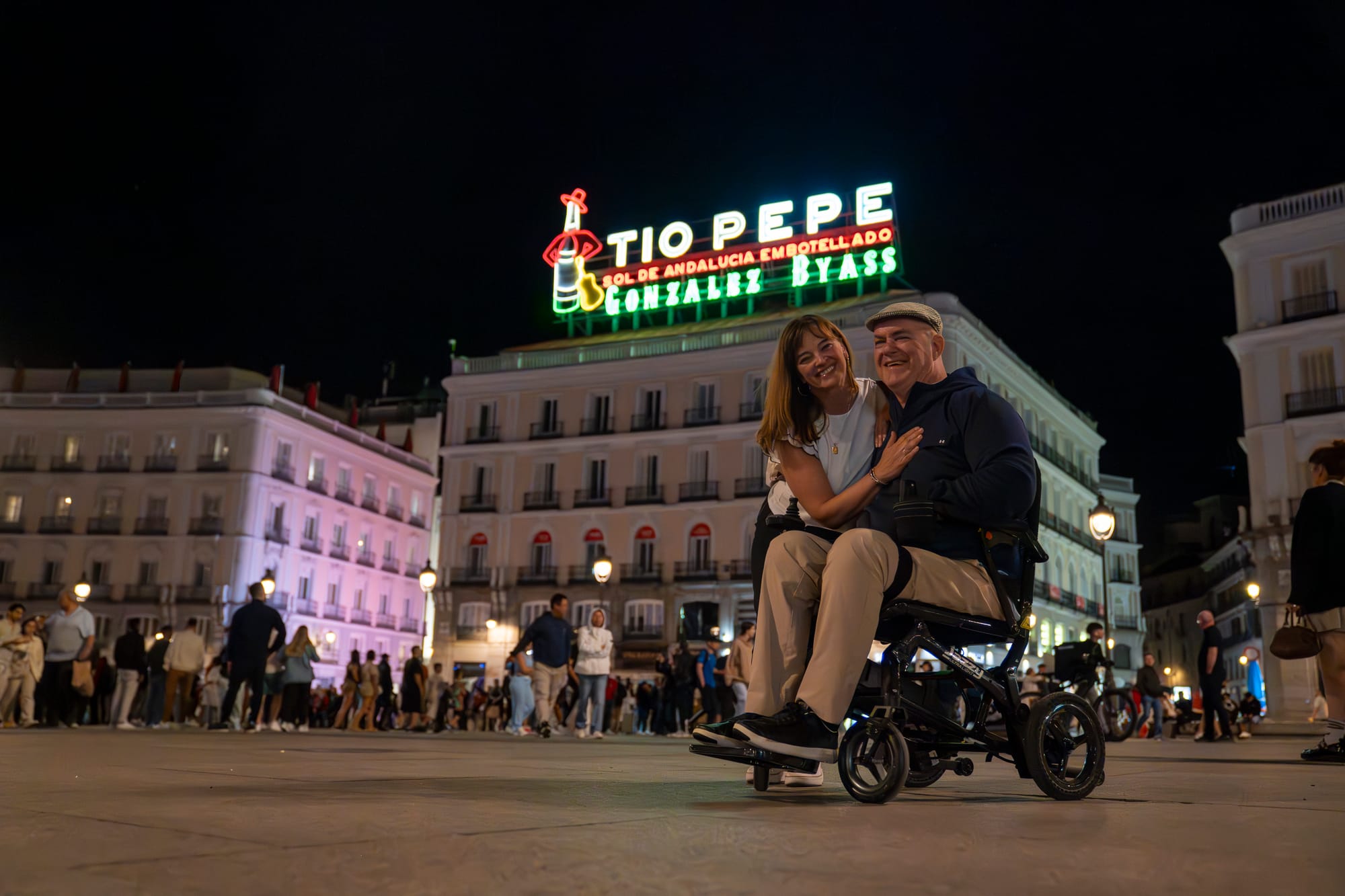
Where to Stay in Madrid
There are plenty of places to stay around Madrid. And yes, while it is relatively accessible if some areas of the city interest you more than others, it is worth taking the time to look at accessible hotel options in those areas to save you some travel hassle. All hotels offer a range of accessibility features, including roll-in showers, grab bars, and step-free access.
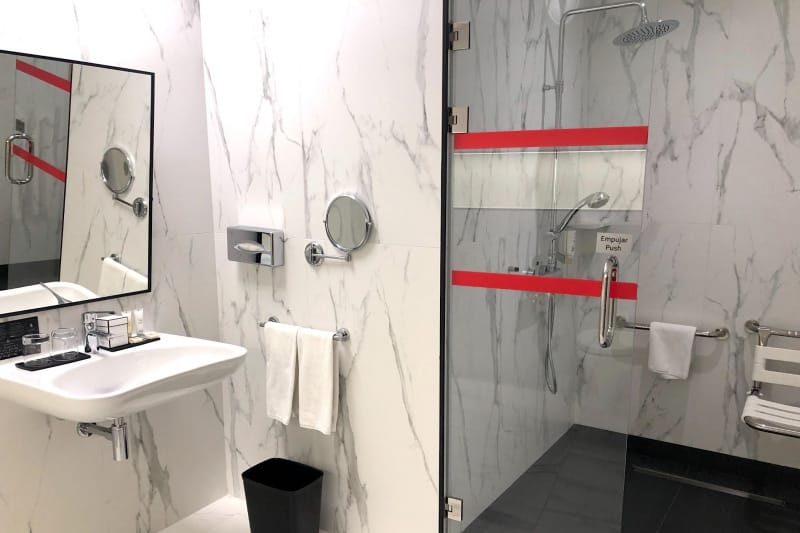
For instance, if you want to stay centrally located, Sol is the place to be. Right near the Puerta del Sol you'll find yourself in the most central location possible. A stone's throw from restaurants and shops galore, this area is also a short distance from the Royal Palace, Casa de Correo clock tower, and large numbers of parties and bars. Hotels such as the RUI Plaza Espana give you all the close access you need. Another great area, if you want to stay near all the nightlife is Chueca. You'll also be close to the Gran Vie with tons of bars available. Some top options here include the Four Seasons or Hotel Europa.
For more of a natural feel, Retiro is a great area to stay in. It's near many green parks as well as museums and galleries. Also, it's a lot quieter than staying in Sol or Centro. Even further out you can stay in Salamanca. This area is home to stunning accessible hotels like the NH Madrid Principe Vergara. It's also very close to the metro if you want ease of transport.

Accessible Transportation in Madrid
As there are some hills in Madrid, being able to get about using local transportation is a must. Luckily, the public transport system does cater to those with accessibility needs. There are many ways you can get around the city, but knowing what these are before you visit, will give you a great head start when you begin exploring.
Moving to/from the Airport
Getting from Adolfo Suarez Madrid-Barajas Airport to Madrid itself is relatively easy. There are multiple transport options for you to take. One of the easiest options is to hire a car to take you directly from the airport to your hotel. You can make sure that it will meet your needs and has wheelchair-accessible options should you need it. At Wheel the World, we can also help you book this, making your trip a whole lot easier.
Taxis are also available, although they may not have the space to cater for accessibility needs. Nevertheless, hiring from the ranks only is recommended as these cabs are regulated, metered, and will not overcharge.
If you're on a budget, then there are other transport options. For instance, there is the express airport bus on line 203. This takes you from the airport to Atocha train station. However, it's a little out of the way for once you're in Madrid, and requires additional transfers to get to other areas within the city.
Two RENFE trains run from the airport, but they do not operate overnight. They are spacious and offer plenty of space for luggage. Additionally, they're fully accessible with a specialized Assistance Service for customers with disabilities. The company has a policy of aiding those with disabilities, so any staff on hand will be able to help you where necessary.
The Pink Metro (Line 8) is accessible. It runs between the airport and Neuvos Minsiterios. A transfer to the accessible Line 10 is required if you want to get further into the city. While access is provided for those with reduced mobility, luggage space is often limited, which can make the metro somewhat of a hassle.
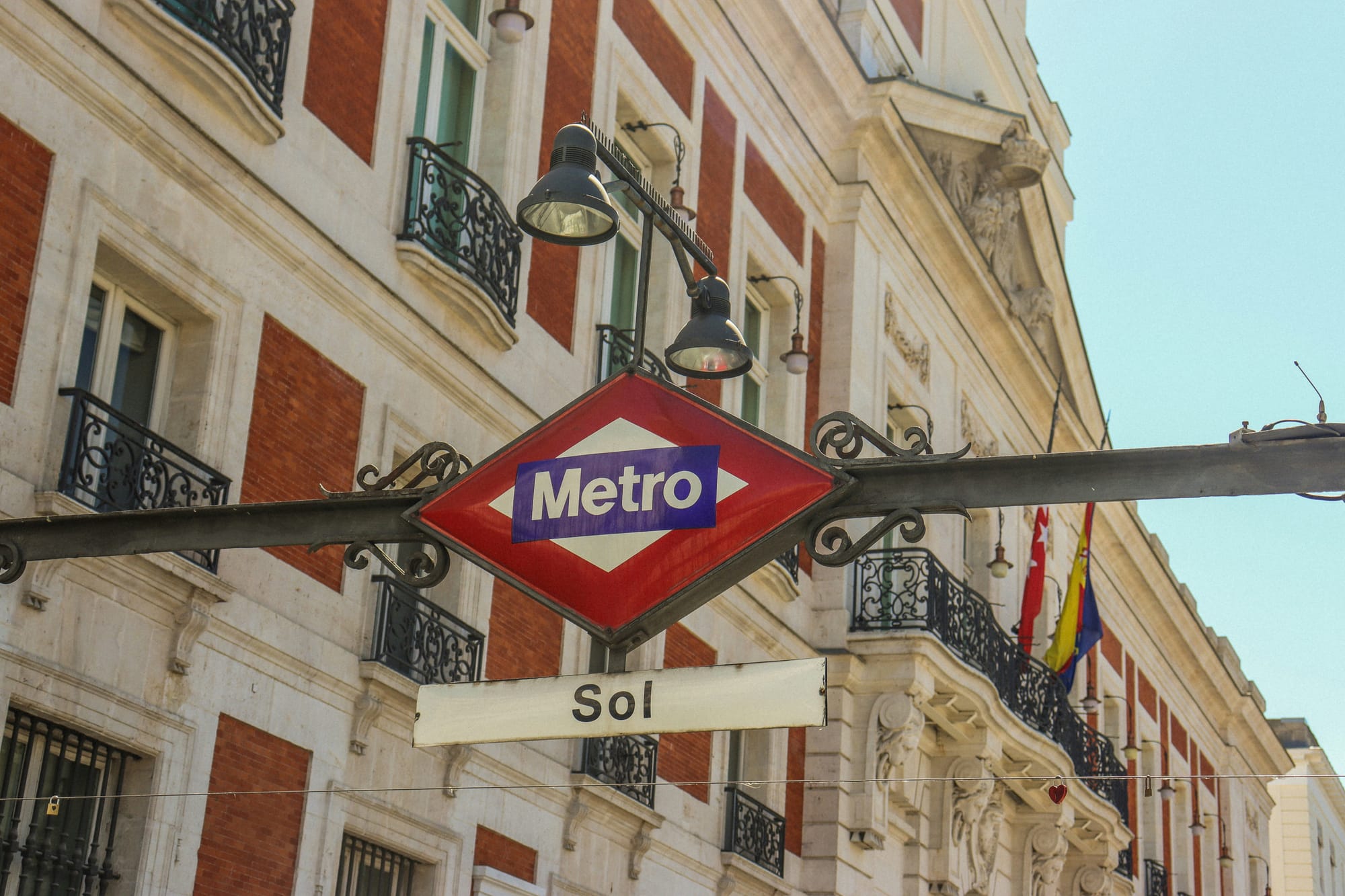
Getting Around Madrid
Once you're in Madrid, then the options to help you get around increase. Of course, you can easily get around by wheelchair on your own. But if you're looking to explore further afield, then there are other options that you ought to know about.
Metro
Madrid is still in the throes of making itself more accessible. With this in mind, nearly 60% of metro stations are step-free and accessible for wheelchairs. Luckily, the metro map, located at each station, very clearly indicates which stations are accessible and which are not. Having this to hand is essential if you plan on navigating the city by yourself for some sightseeing. View their accessible lines.
Buses
Run by the Empresa Municipal de Transportes (EMT), all buses are fully accessible. However, to get on a bus, you will have to flag it down. Buses are often full, so you may find you have to wait for the next one. Typically, they will arrive around 15 minutes later, but it does require some planning to get around. Once on them, there are always ample spaces for wheelchair users.
Taxis
Impressively, there is a special company that caters for those with disabilities in Madrid. The company, Eurotaxi can be booked 24 hours in advance and offers a wealth of accessibility features. Not only do they have ramps, but also spacious interiors to make you comfortable when you head out for the day. Other taxis on the street tend not to be able to cater to accessibility needs.
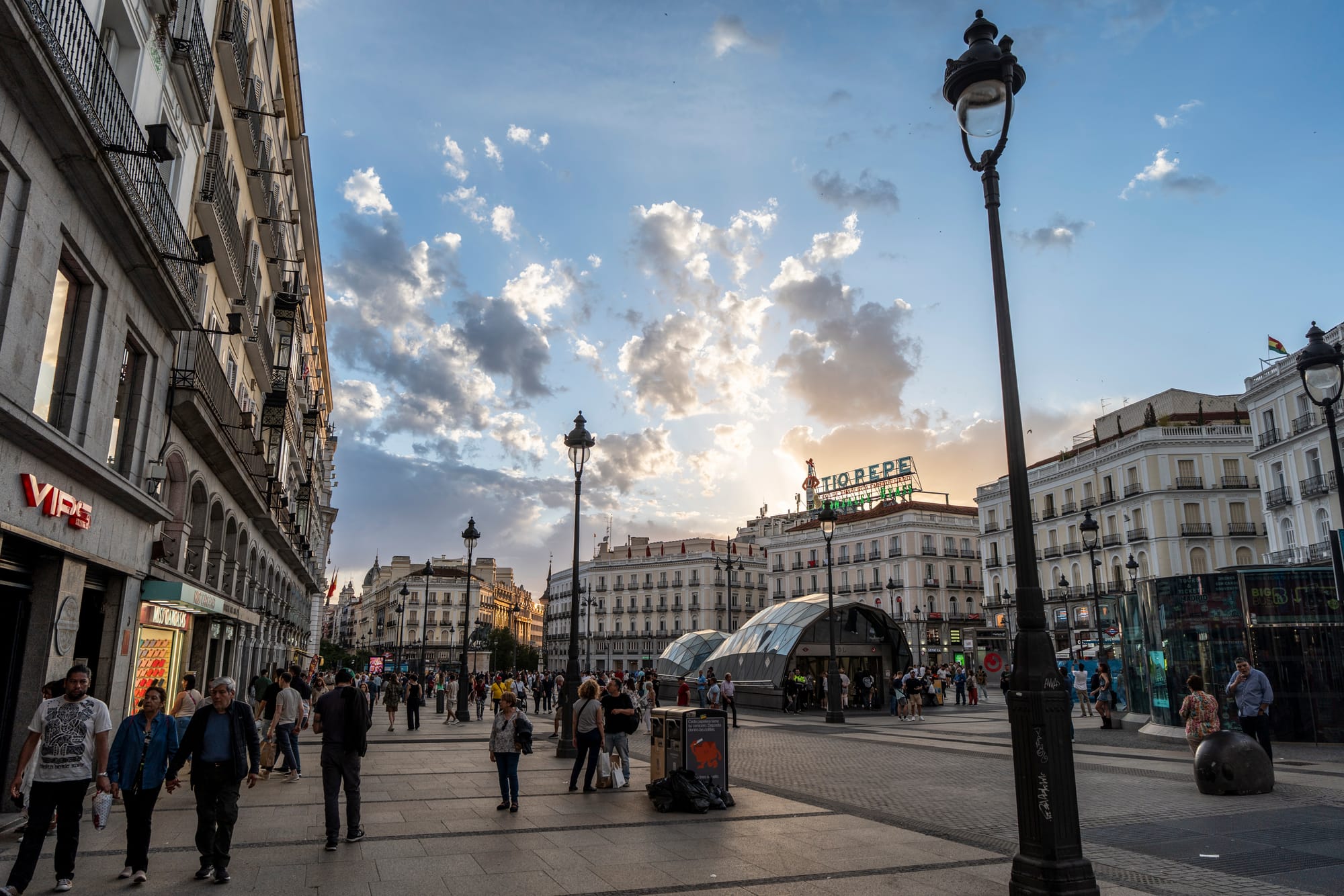
Top 10 Things to do and Their Accessibility
In Madrid, there is an enormous list of things to do and see. Whittling down the options can be quite hard. There are numerous tours you can do, including tapas food tours and specific historic city tours. You can also choose from a selection of multi-day vacation packages, which give you a personalized itinerary of the city. Of course, you don't have to do this with a group, but can explore alone as well. Let's have a look at the top attractions in this bustling city.
1. Prado Museum
A hugely important museum, the Prado Museum is home to a massive collection of European art. Many top Spanish artists are featured here. These include Goya, El Greco, and Velazquez to name but a few. Importantly, it's accessible in all areas complete with ramps, lifts, and step-free restrooms. To maximize time spent here, consider opting for a guided tour.
2. Retiro Park
For a gentle stroll or some solo wheeling, Retiro Park is a great stop-off. Located smack in the middle of Madrid, this large park offers picnicking, paddling, or contemplative wheeling among the gardens and sculptures. It's ideal for solo travelers thanks to flat paved pathways catering to both manual and electronic wheelchairs.
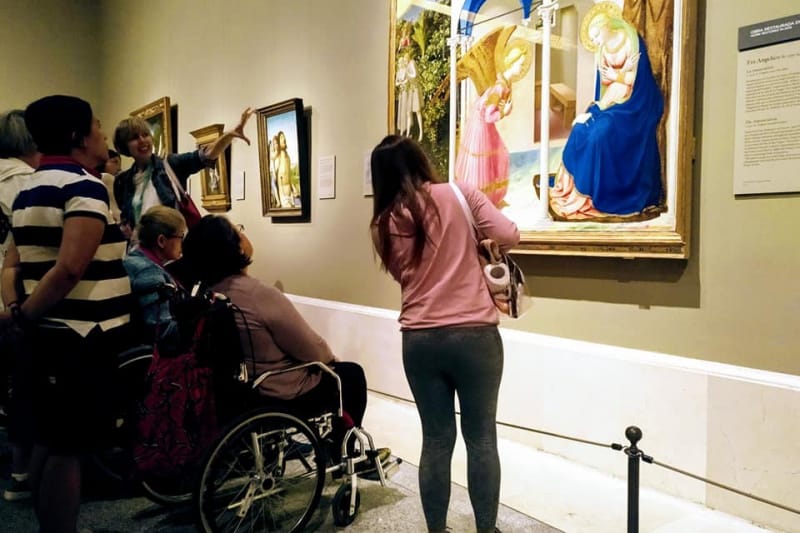
3. Plaza Mayor
This historic square sits in the middle of numerous three-story buildings, all with stunning arches and balconies. It's a common setting for many a cultural event or festival during the year. Plaza Mayor is truly iconic and offers access ramps for anyone with reduced mobility.
4. Puerta del Sol
A well-known spot if you're here during December, Puerta del Sol is where New Year's Eve is celebrated. It's right in the heart of Madrid, and Spain itself, and is home to the Casa de Correos clock tower where the New Year is rung in. Getting here in a wheelchair is easy thanks to the various ramps and accessibility features including designated areas for those with reduced mobility.
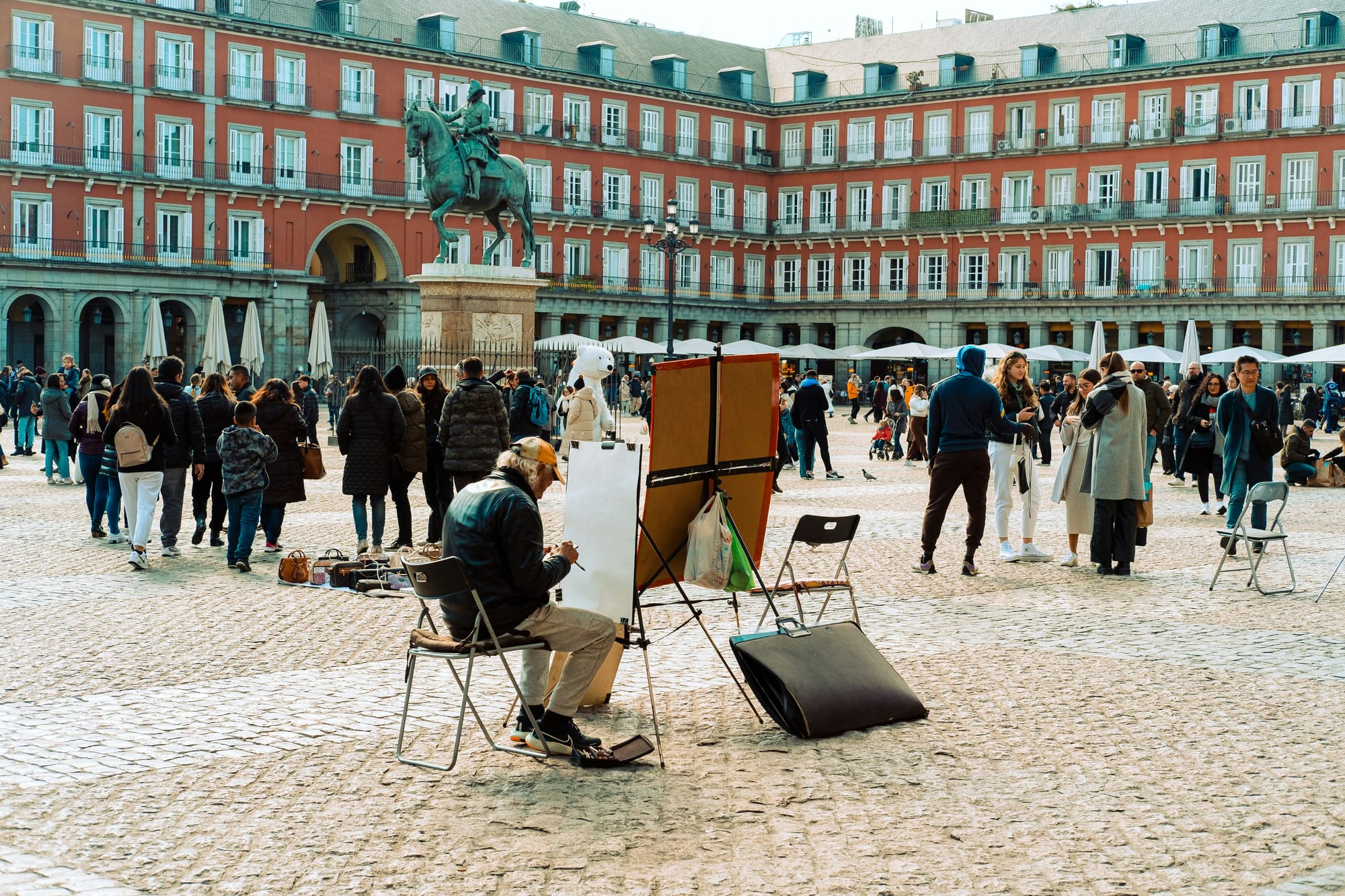
5. Mercado de San Miguel
This covered market is a stunningly designed iron and glass building. Within the market itself is where you can find a range of tapas and local produce. And yes, you can try them all. It's very popular, but it's also easy to get here under your own steam and explore due to the ramped access.
6. The Royal Palace
As the official residence of the Spanish royal family, the Royal Palace is a regular stopping place. It's got over 3000 rooms that are filled with works of art. Guided tours are available and, if you book with us, will offer you an accessible view of the palace. Wheelchairs are also available on request should you need them.

7. Reina Sofia Museum
This museum of contemporary art is good for seeing something a little different. It's got some of the most iconic art pieces from the last 100 or so years including work from Picasso. There is an extensive selection of modern Spanish art, which can all be easily accessed no matter your mobility level.
8. Temple of Debod
This ancient Egyptian temple was actually donated to Spain, where it was reconstructed in Madrid. It's a stunning place for a view over Madrid, especially if you go there late in the evening to watch the sunset over the city. Despite being an old monument, it has been modified to provide accessibility to all including ramps.
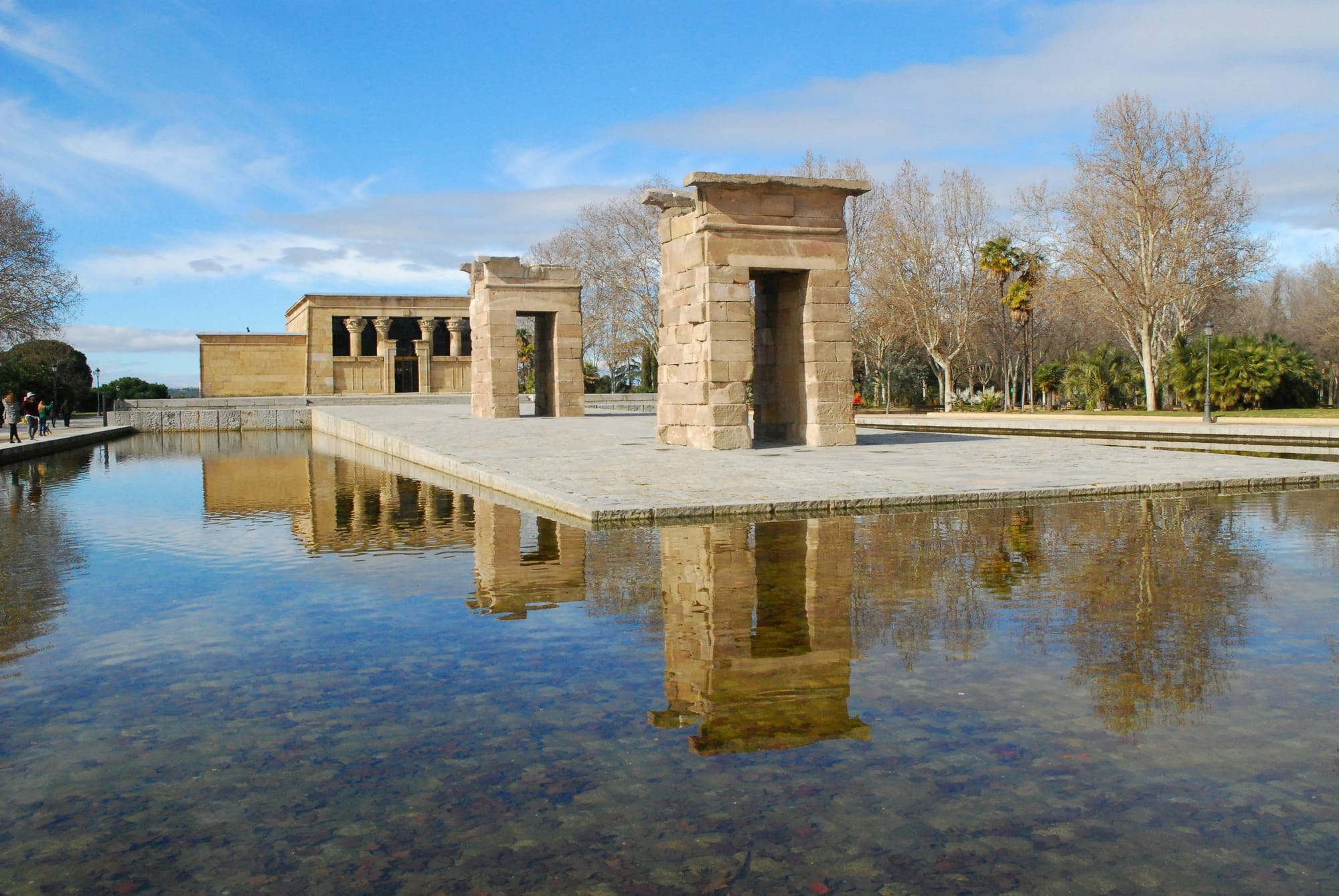
9. Santiago Branabeu Stadium
If you're a soccer fan, then you will already know this is the home of Real Madrid. Fans can take a tour here to discover more about the club and its history. Better still, if you plan your trip well, you can even get tickets to see the team play. The stadium, much like other venues of this kind, has been built to provide designated areas for those with accessibility needs
10. La Gran Via
One of the main streets in Madrid, this is not to be missed. La Gran Via is stunning just to look at thanks to its impressive architecture. It's also full of shops, small theaters, and exciting nightlife. Access is made easy thanks to the recently revamped station now catering to those with reduced mobility.
More to Explore Outside Madrid
Madrid is the heartbeat of Spain—but it’s not the whole story. One of the joys of staying in Madrid is how easy it is to explore beyond the city center. Thanks to accessible transportation and short travel times, you can add a dose of countryside charm, royal history, or literary legacy to your trip—without the stress.
These four destinations are all part of the Comunidad de Madrid and make excellent wheelchair-friendly day trips. Whether you’re traveling solo or joining one of our group tours, they’re a reminder that Madrid is just the beginning.
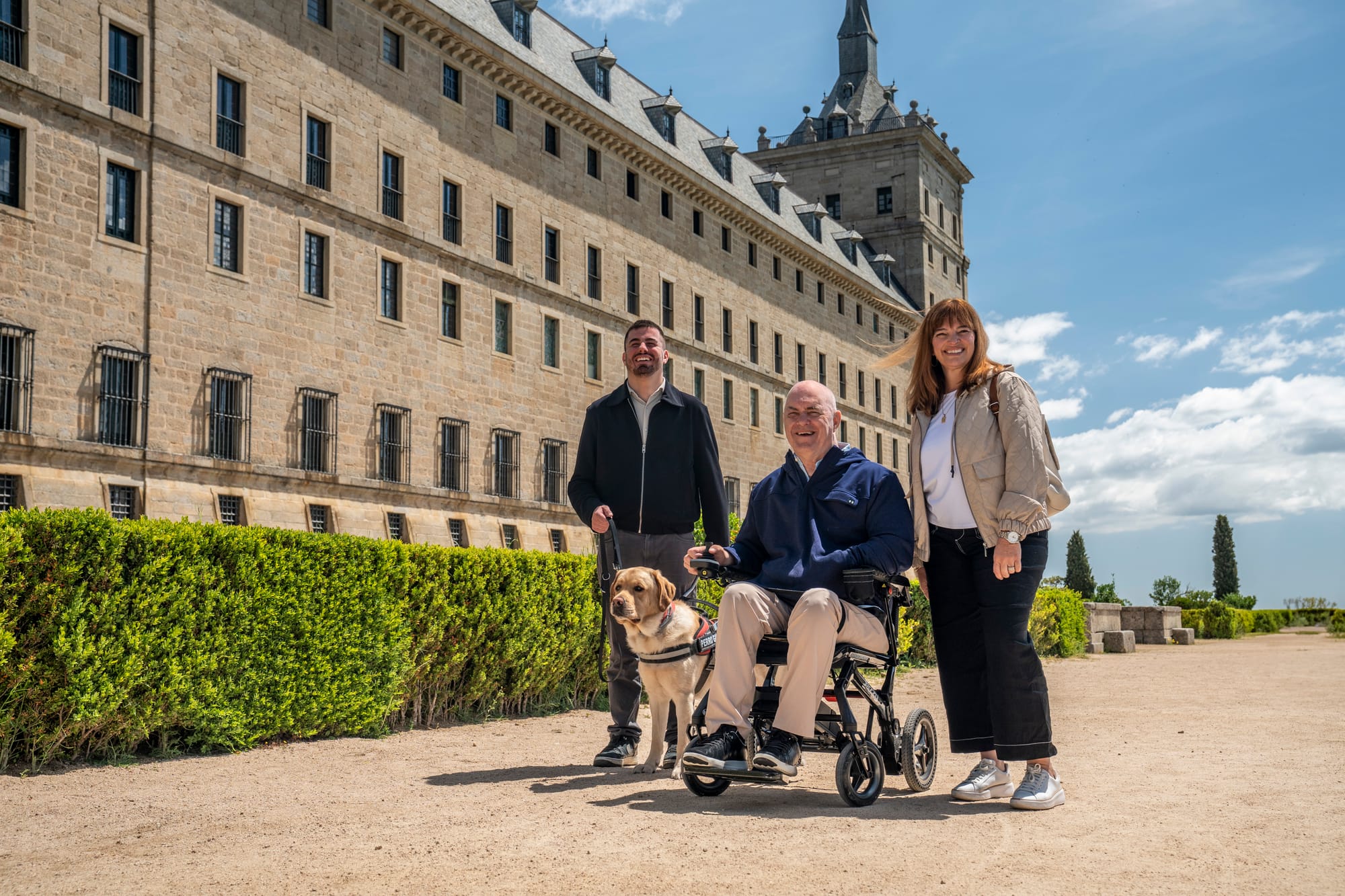
San Lorenzo de El Escorial
Less than an hour from Madrid and nestled in the Sierra de Guadarrama foothills, this UNESCO World Heritage Site is known for its grand Royal Monastery—part palace, part basilica, and part library. It’s a showcase of 16th-century Spanish power, built by King Philip II. Wide pathways, elevators, and accessible entrances make it surprisingly easy to navigate. After your visit, stop for lunch in the town square and enjoy the views of the surrounding hills. It’s regal, peaceful, and a little cooler than the city in summer.
Alcalá de Henares
This university town (and UNESCO site) is famous as the birthplace of Miguel de Cervantes, author of Don Quixote. The historic quarter is full of wide walkways, literary statues, and café-lined plazas. Visit the University of Alcalá’s ornate buildings or catch a puppet show at the Corral de Comedias, one of the oldest theaters in Europe. The town blends storybook charm with real accessibility—plus, it’s an easy train ride from central Madrid.
Aranjuez
Want to feel like Spanish royalty for a day? Aranjuez is known for its lush royal gardens, impressive palaces, and tranquil riverside views. The flat, tree-lined paths in the gardens are perfect for rolling along under the shade. While you’re there, explore the Royal Palace of Aranjuez (yes, it’s wheelchair accessible), and don’t miss the local market scene. It’s a popular getaway for Madrid locals—and an underrated gem for visitors.

Chinchón
This picturesque town feels like stepping into a sepia-toned postcard. The heart of Chinchón is its historic plaza, where green-shuttered balconies line the cobblestones. The main square is often used for festivals, open-air markets, and even old-school theater. Many restaurants have accessible seating, and the slower pace makes it a great break from the buzz of Madrid. Go for lunch, stay for the charm.
Want to Experience These With a Group?
We’ve created a 6-day accessible group tour of Madrid that combines the best of the capital city with a guided excursion to San Lorenzo de El Escorial. From tapas and flamenco to palaces and Picasso, this trip is fully accessible and thoughtfully planned for comfort and cultural connection.
What’s included?
- Wheelchair-accessible accommodations and transport
- Bilingual certified guide
- All tours, entrances, and meals in itinerary
- A welcoming group of like-minded travelers

Accessible Restaurants Recommended by our Community
It's not always easy to locate a wheelchair-friendly restaurant in Madrid. With this in mind, our community of Wheel the World travelers is on hand to help out. They've done the rounds and found a number of top restaurants in the city that not only offer stunning food, but an accessible dining experience as well. All the restaurants listed here offer wheelchair access (even if some do so through a side entrance), handrails, spacious restrooms with high toilets, and plenty of space to maneuver between tables. Let's have a look at these delicious places to eat.
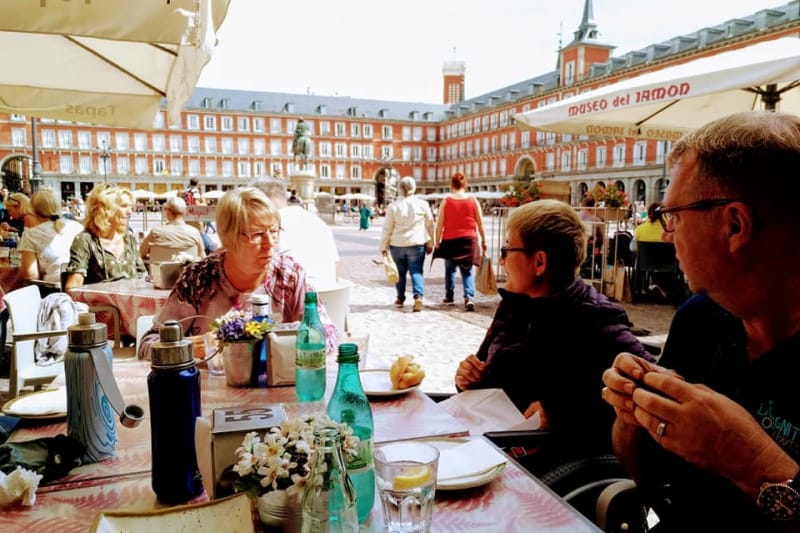
- Puerta del Mar Tres Cantos: Find the best paellas in Madrid, prepared traditionally using local produce, on Bolillero Street.
- Estimar Madrid: Quality seafood that's hard to beat. Located on Marquis de Cubas, there is a small (2 cm) step to enter, but staff will assist, and it's worth the effort.
- Ferreteria: Head to Calle Atocha 57 for a fully reduced-mobility-adapted venue that uses high-quality produce to make traditional, yet updated, Spanish cuisine.
- Fogato: Contemporary and minimalist, this restaurant was previously known as Fayer and fused Israeli and Argentinian cuisine. Now focused on Argentinian dishes it has a lift for access.
- Le Bistroman Atelier: Cozy restaurant with a classic, rustic style, access ramp, and French food in Centro.
- Zurito: Negotiate the small step, staff will assist, and you'll gain access to a plethora of seafood and cured meat in a market-style cuisine on Calle Lope De Vega.
- RavioXO: Fully accessible pasta-heavy restaurant with signature dumpling dishes and some of the most award-winning plates in Madrid's Plaza de Manuel Gomez-Moreno.
- Rubaiyat Madrid: Stunning location with access ramps to a terrace to enjoy Brazilian Feijoada and a complete meat selection on Calle de Juan Ramon Jimenez.
- Fonda de la Confianza: Located on Calle del Gral, staff will assist with access over three small steps as there is no access ramp. Head here to the terrace for a traditional menu of contemporary cuisine including rice dishes and daily specials.

Accessible Madrid Tips from Our Community
Finding Restrooms
When you need the restroom, it can become a matter of urgency. And when you're in a foreign city, the panic can be real. Unfortunately, Madrid is not the easiest city to find public toilets in. Of course, shopping malls and tourist attractions always have accessible facilities, but other places do not. We've found some apps that are helpful for this such as Mapp4All, WheelMate, AccessibilidApp, and Google Maps. Each has a different level of assistance when looking for restrooms. Additionally, they don't always tell you if they're good for the mobility impaired. So, with this in mind, we do recommend carefully planning your daily travel so that you don't get caught short.
Packing List
If you want to be comfortable on your trip to Madrid, here are some items that should be at the top of your list:
- Medications
- ID and disability documentation
- Service dog essentials
- Shower footrest or seat
- Battery charger for electric wheelchair
- Converter if you're not from mainland Europe*
- Sunscreen in summer
*Mainland Europe uses Plug C (two round pins) and 220-240V supply voltage.
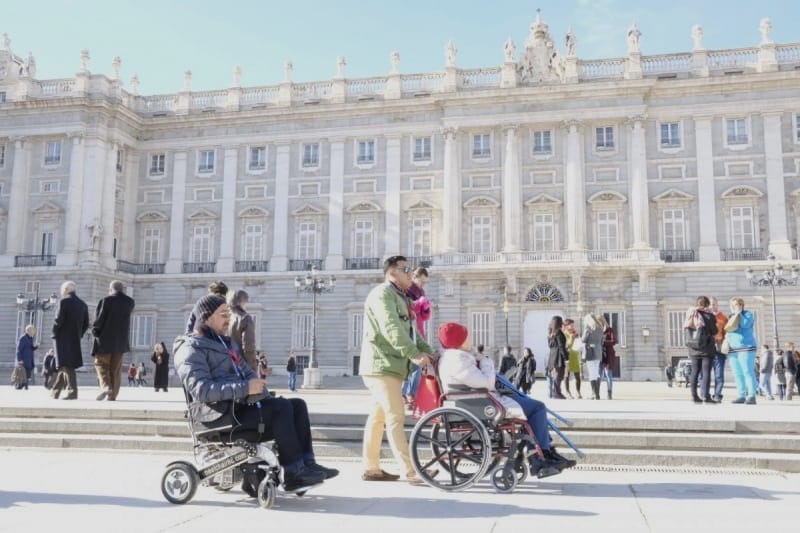
Wheelchair Repair Shops
A damaged wheelchair is a huge pain as it means no mobility. Keeping your chair in good shape is a must. So, here are some reliable wheelchair repair shops in Madrid to be aware of:
- Ortopedia Madrid Mundo Dependencia: I Camas de Hospital I Sillas de Ruedas I Gruas Discapacitados, C. de Maudes, 15, Chamberí, 28003 Madrid, Spain
- OrtopediaExtremadura: P.º de Extremadura, 168, Latina, 28011 Madrid, Spain
If you need repairs on your trip, then these are two of the shops that can provide help and keep you mobile when visiting Madrid. Wheelchairs can also be rented for the duration of your stay.
Safety
Madrid is quite a safe city, but you should always exercise caution. Make sure you keep your belongings secure, especially when in crowded areas. You should also avoid areas without lights when coming home late. We do recommend taking public transport, though be aware of pickpockets. If you do have an emergency, the number is 112. Finally, you should always pay attention when you're paying for something as there are tourist scams in Madrid.
But, if you do need help, get in touch with us. Our WtW experts are always ready to give a helping hand. Better still, we can actually help book and plan your trip for you!
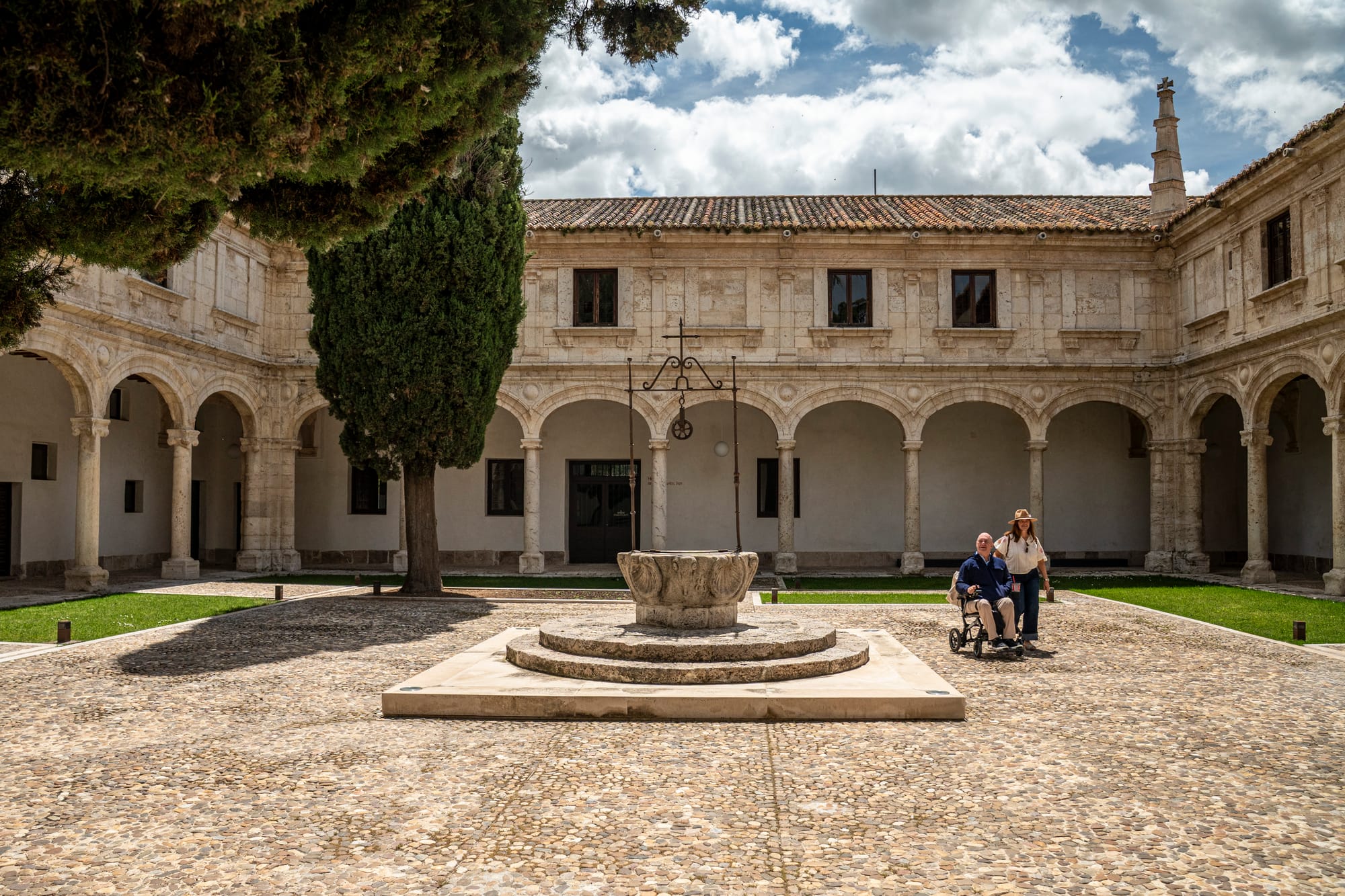
Accessible Travel to Madrid. Know Before You Go.
hotels, things to do, and more with all the accessibility details you need.
Start Here



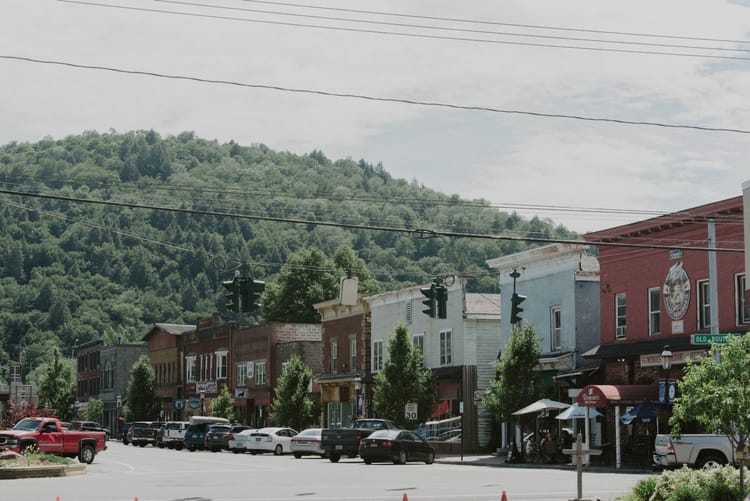

Comments ()